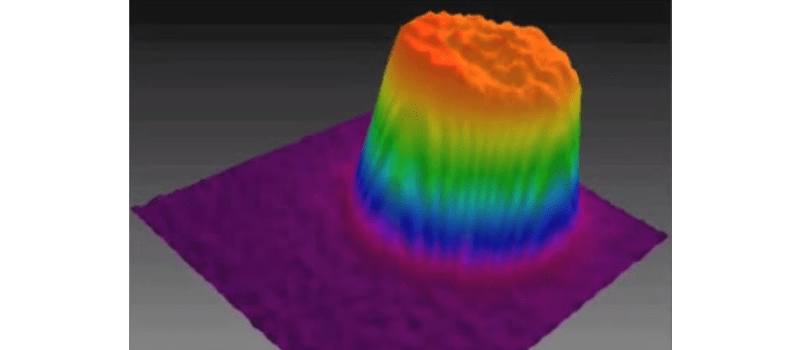Fiber optic telecommunications systems include optical components where light exits the fiber, is directed through optical elements such as optical filters or optical amplifiers, and is then coupled back into a fiber and sent towards its destination. The beam exits the fiber with a diverging angle and has to be collimated by a collimating lens before it propagates through the optical elements. After the beam is modified it has to be refocused by a lens and coupled back into a fiber.
Although it may seem the construction of such a component is rather simple and easy, it actually presents perhaps one of the most common alignment challenges in the telecom industry. Telecom applications require extremely low loss devices, a little bit of loss can make the difference of the system working or not working so aligning of the optical elements has to be as perfect as possible. The focusing and collimating lenses, as well as the optical elements, have to be positioned and oriented to precise tolerances to obtain a minimal loss level. In many cases as little as a 3% loss is enough to prevent the signal from reaching its destination. Aligning optics so precisely can be a very challenging task. Adjusting all the optics of a system while maintaining an acceptable loss level can be tedious and rather time consuming. Furthermore many components such as add/drop multiplexers include fiber arrays where multiple beams are carried in many fibers, and they all have to be aligned precisely into lenses, directed to other fibers, focused again and coupled back into fibers. How can manufacturers align fiber arrays with many beams quickly and efficiently promising an extremely low loss level demanded by the telecom industry?
An accurate beam profile allows aligning each element of a device separately to very high precision. Then aligning them into a final device becomes much easier. For example, if a final device calls for a beam or beams with a 100 μm beam waist at 15mm from the lens, the beam profiler will allow its precise measurement in both size and position. Once aligned the device can be properly positioned to couple the light into the fiber or additional device.
Ophir-Photon’s NanoScan scanning slit profiler was specifically designed to meet the requirements of the telecom industry and can be used to align multiple beams or fiber arrays as well. Most telecom applications operate at the near-Infrared wavelengths at around 1550 nm. CCD cameras do not respond at this wavelength, so they are not an option. The NanoScan is available with a Germanium detector that is perfect for the 1500nm wavelength range, and it is used all over the optical telecommunications world for aligning optics. It has the precision and accuracy necessary to precisely define the size and location of the beam. In addition there is an optional power meter capability that will allow the user to monitor losses directly while making adjustments to the optical system.
For the alignment of multiple beam arrays, the NanoScan software allows the characterization of up to 16 simultaneous beams entering the aperture, allowing the user to examine and evaluate various standard beam parameters displayed within the automatically-determined or user-defined regions-of-interest (ROI) on any or all beams captured by NanoScan. This unique control and selection feature gives the user flexibility to single out one beam or to view the entire beam set. Multiple beam data is displayed on the screen and can be isolated in contiguous beam sections as they are collected. This feature is helpful to ensure all beams are aligned properly for fiber array use or any other application.
For more details about multiple beam analysis with the NanoScan: Multiple Beam analysis
You might also like to read: Measuring laser power of fiber optic cables
Share this:










I read Your Post because i researched on fiber products and i would like to share some things with you also. There are plenty of interesting things going on in the world of fiber optics. no doubt one of the best and most efficient method based on internal refraction of light waves in the form of transfer of data and information. it uses light, anti-electromagnetic interference. Sometimes fiber is damaged, because the cracks in the fiber, or through contaminated dust and oil, which in turn affect the data transmission. To ensure that the optical fiber, fiber to maintain the best level of execution is very important fiber-optic examination should always use fiber-optic tools based on completed. The fiber tester is the most commonly used tool to test the fiber. Testing of fiber optic tester, the most effective optical fiber transmission, and detected at the other end. Some of the best test of the continuity of fiber.
Quality blog, keep up the good work.